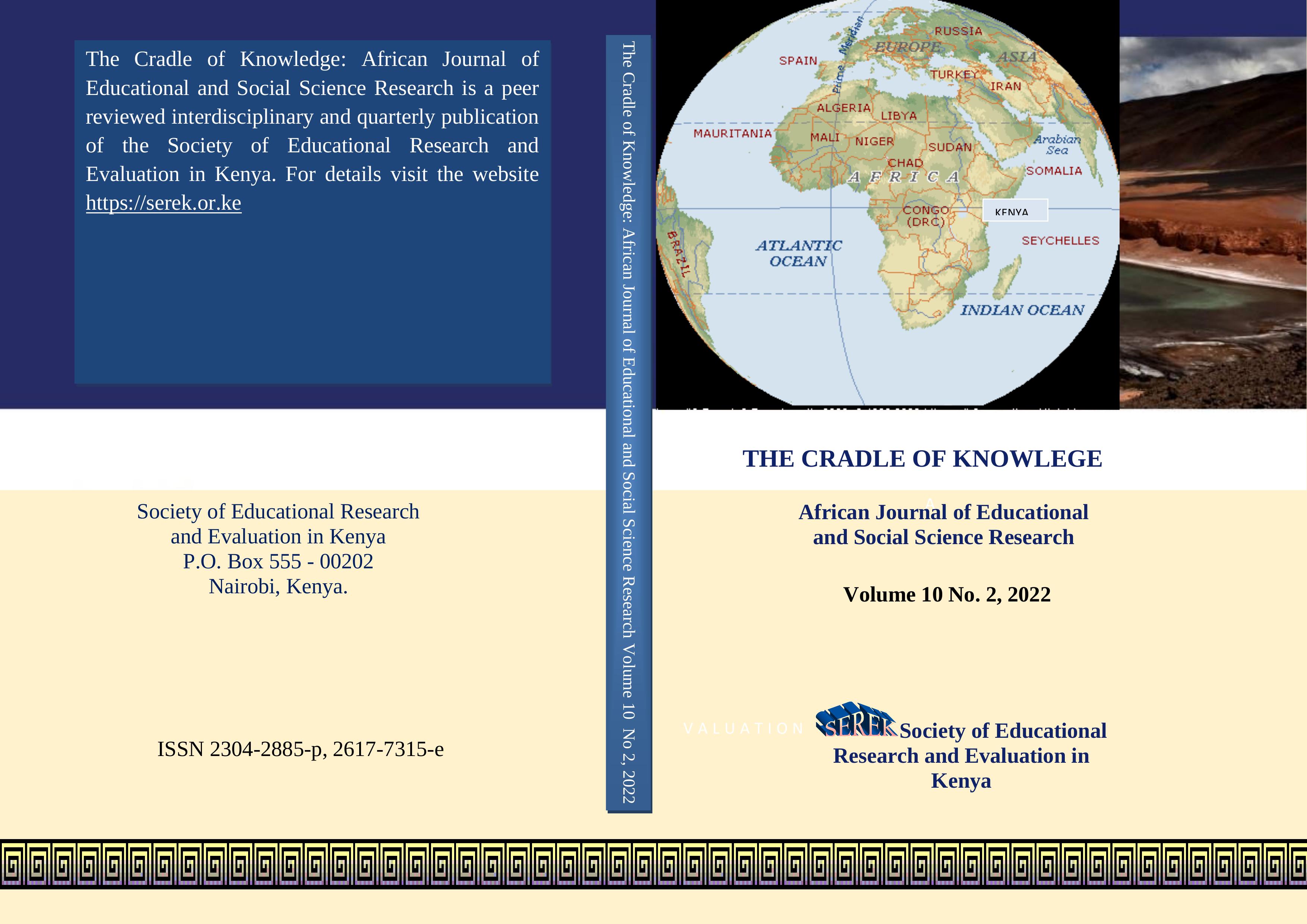
Private Rate of Returns to Investment in Education for Teachers with Bachelor’s Degree in Public Secondary Schools in Kenya
Abstract
The theory of human capital postulates an increase in earnings at different levels of educational qualifications. However, there are mixed findings and interpretations on return to investment in education around the world. This is attributed to differences in methodology and methods of data analysis. By employing the Mincer regression equation this paper presents findings on private rate of return to investment in higher education for teachers with bachelor’s degree using a sample of 484 teachers. Primary data was collected using a questionnaire. The multivariate regression results showed years of schooling negatively affected private rate of return to schooling for secondary school teachers having bachelor’s degree, while experience and experience squared had positive effect on private rate of return to schooling. Based on Mincer regression equation generated, the private rate of return to schooling for secondary school teachers having bachelor’s degree in Kenya was 58.18%. Owing to increasing direct private costs to education, it is profitable for individuals intending to invest in higher education do so at a younger age so as to reap maximally from investment in higher education.
Keywords: Private Rate of Returns, Mincer Regression, Bachelor’s Degree, Schooling, Earnings, Experience, Human Capital
Full Text:
PDFReferences
Becker, G. S. (2009). Human capital: A theoretical and empirical analysis, with special reference to education. University of Chicago press.
Becker, G. S. (1993). The economic way of looking at life.
Colclough, C., Kingdon, G., &Patrinos, H. (2009). The pattern of returns to education and its implications.
Cronbach, L. J. (1951). Coefficient alpha and the internal structure of tests. psychometrika, 16(3), 297-334.
Knight, J. B., & Sabot, R. H. (1987). Educational policy and labour productivity: an output accounting exercise. The Economic Journal, 97(385), 199-214.
Leyaro, V., & Joseph, C. (2019). Employment mobility and returns to technical and vocational training: Empirical evidence for Tanzania (No. 19/03). CREDIT Research Paper.
Mincer, J. (1974).Schooling, Experience, and Earnings.Human Behavior & Social Institutions No. 2. Accessed from https://www.nber.org/books-and-chapters/schooling-experience-and-earnings
Patrinos, H. A. (2016). Estimating the return to schooling using the Mincer equation. IZA World of Labor.
Psacharopoulos, G., & Patrinos*, H. A. (2004). Returns to investment in education: a further update. Education economics, 12(2), 111-134.
Republic of Kenya, (2005b). Sessional paper No.1 of 2005: A policy Framework on education training and research for the 21st century. Nairobi: Government printer.
Republic of Kenya, (2003). Economic recovery strategy for wealth and employment creation 2003-2007, Nairobi: Government printer.
Rugar, T. O., Ayodo, T. M. O., &Agak, J. O. (2010). Rate of financial return to university schooling among lecturers in two public universities in Kenya.
Shahar, S. B. (2008). The rate of return to investment in education: A case study of polytechnic diploma graduates (Doctoral dissertation, Master Thesis, Universitisains Malaysia, Pulau Pinang).
World Bank (1992). World Bank Indicators, CD-Rom World Bank, Washington, DC.
Refbacks
- There are currently no refbacks.

This work is licensed under a Creative Commons Attribution 4.0 International License.
SEREK publication https://serek.or.ke
This work is licensed under a Creative Commons Attribution 4.0 International License